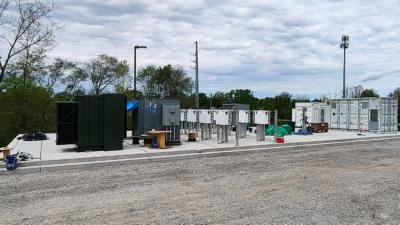Recognizing that the building sector is responsible for almost half of all greenhouse gas (GHG) emissions annually, key leaders in this sector have banded together to confront the global-warming crisis.
Last week, the American Institute of Architects (AIA), U.S. Green Building Council (USGBC), American Society of Heating, Refrigerating and Air-Conditioning Engineers (ASHRAE), Architecture 2030 and about 20 other leaders attended a special meeting at the 2006 Greenbuild International Conference and Expo, a conference presented annually by the USGBC.
“Eliminating the built environment’s negative contribution to climate change is not just a strategic priority, it’s our collective responsibility to generations to come,” explained Rick Fedrizzi, president, CEO and founding chairman of USGBC. “Science tells us we have 3,650 days to meet that goal, and urgent action is required.”
During the meeting, the group reached a consensus on three critical issues facing the building sector as it works to bring energy consumption and GHG emissions in this sector under control: the need for a common goal, the definition of this goal and a baseline to measure progress against. “The building industry is coming together around the common goal of Architecture 2030’s targets for reductions in energy use. The organizations and individuals in this meeting need to reach out to the entire industry, encouraging them all to work together in achieving these targets.”, said R.K. Stewart, president-elect of AIA.
In a show of solidarity and commitment, these leaders have adopted‘The 2030 Challenge’ targets. The 2030 Challenge, a global initiative officially launched by Architecture 2030 in January 2006, calls for all new buildings and major renovations to reduce their fossil-fuel GHG-emitting energy consumption by 50% immediately, increasing this reduction to 60% in 2010, 70% in 2015, 80% in 2020, 90% in 2025, and finally, that all new buildings would be carbon neutral by the year 2030. Terry Townsend, President of ASHRAE, stated that, “ASHRAE is committed to developing the tools needed to accomplish the Architecture 2030 challenge.”
The 2030 Challenge targets had previously been adopted by the 78,000 member AIA, the US Conference of Mayors (for all buildings in all cities; Resolution #50) and individual cities and counties; endorsed by the International Council for Local Environmental Initiatives (ICLEI) and incorporated into their “Statement of Action”; integrated into the EPA’s Target Finder; and promoted by the National Wildlife Federation and others. However, last week’s collaborative adoption creates a powerful consensus, allowing for the sharing of information and support.
A critical component to the success of this effort is the definition of a baseline by which all reductions will be measured. A complete regional database of actual energy use for all building types is not currently available. To provide an immediate and interim solution, the group adopted the data supplied by the Energy Information Agency’s (U.S. Dept. of Energy), which is currently used by the EPA in their Target Finder program.
All participants agreed that collaboration is necessary to reach the goal and each will develop the tools necessary for their membership to accomplish this. The participants are openly inviting other industry leaders to join forces with them. Edward Mazria, founder and executive director of Architecture 2030, said, “The task we face is daunting. Working separately, we could accomplish something significant in each of our respective spheres. But by working together, we actually have a chance to influence the course of history.”



